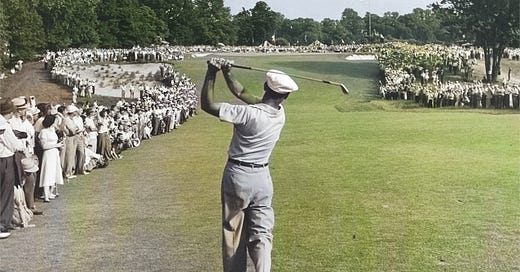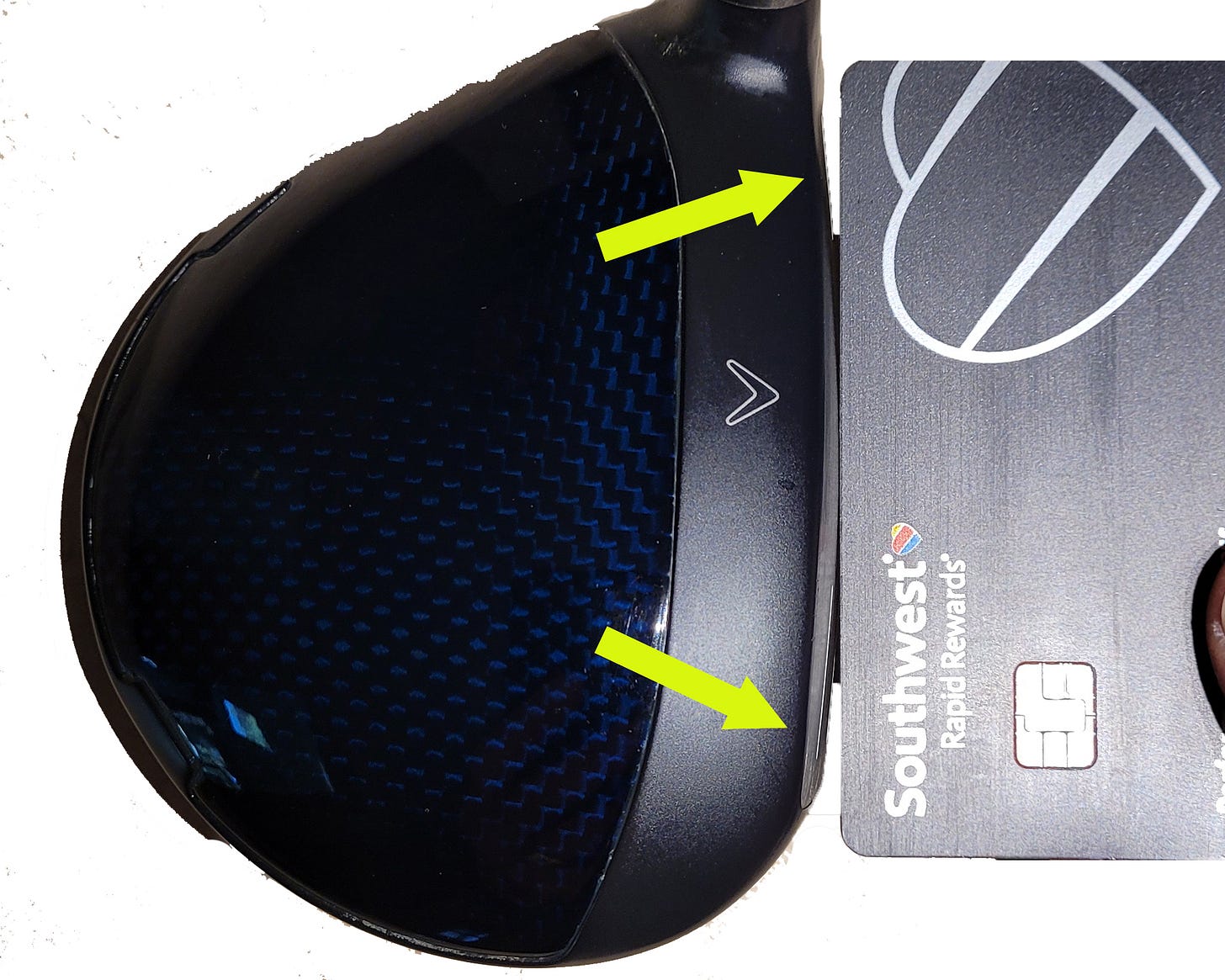This now famous photo is of Ben Hogan playing a one-iron into the closing par 5 at Merion Country club. This feat is likely never to be repeated because the one-iron has gone the way of the dinosaurs. For both amateurs and many professionals, so has the 2, 3, and 4-iron. The demise of these clubs is due to the advent of hybrid woods and the incontrovertible benefit they bring to the golfer.
Let’s identify the beneficial characteristics of these hybrid woods. First, they are going to be more “forgiving”. What that means is that they have a bigger sweet spot. More specifically, the face is more stable and twists less with off-center contact. Less twisting means the ball tends to fly closer to your intended line. Unlike their iron counterparts, these clubheads allow for there to be more perimeter weighting, thus increasing the club’s MOI (moment of inertia).
Second, the face of the club has “bulge”. If you lay the edge of a credit card along the face of these hybrid woods, you’ll find the face is not flat. Without going into some physics, the curved face will tend to impart corrective hook spin on shots contacted toward the toe of the club and corrective slice spin to shots contacted toward the heel. As you know, shots off the toe or heel of an iron do not get this benefit.
Lastly, again because of the clubhead difference, the hybrid woods will provide the distance of a long iron but do so with greater trajectory and therefore more tendency to hold the green upon descent.
Bottom Line: If you haven’t compared your longer irons to their hybrid wood counterparts, you can be making the game more challenging than need be.
Note: After being struck by lightning, it became a sensation when Lee Trevino was walking down the fairway in a storm fearlessly holding a golf club up to the sky. Lee’s now famous quip was, “Not even God can hit a one-iron.”
Each Thursday we’ll bring you a helpful insight.
Swing to the Target,
Ed
Learn from our YouTube videos
Have golf buddies? Share this article.






